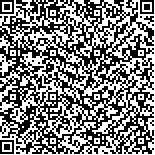| 摘要: |
| 龟足(Capitulum mitella Linnaeus)的食物组成可分为4 类, 动物性食物、植物性食物、有机碎屑和无机颗粒。动物性食物主要以桡足类为主, 植物性食物主要以硅藻类为主, 有机碎屑在龟足的食物组成中占据重要地位。龟足食物的食物多样性指数在夏季最高, 冬季最低。小规格龟足主要摄食植物性食物和有机碎屑, 未见摄食动物性食物; 大规格龟足和中等规格的龟足的食性差异不大, 以桡足类和有机碎屑为主。龟足的摄食强度在8 月最强, 1 月、2 月和12 月最弱。龟足摄取食物的大小范围很广, 能够摄取包括2~2 130 μm 大小的食物。 |
| 关键词: 龟足(Capitulum mitella Linnaeus) 食性 食物组成 摄食 周年变化 |
| DOI: |
| 分类号: |
| 基金项目:福建省科技厅重点项目(2006N0066) |
|
| Stomach contents of the pedunculate Cirripeda Capitulum mitella in the coastal area of Fuzhou |
|
|
| Abstract: |
| An account of the stomach contents of Capitulum mitella from the coastal area of Fuzhou was described. The stomach contents consisted of four basic food categories: zooplankton, phytoplankton, organic detritus, and inorganic particulate material. Copepoda was the major part of the zooplankton, and diatom was the major part of the phytoplankton. Organic detritus occupied the important position in the stomach contents. The highest value of diet diversity index appeared in summer, while the lowest in winter. Zooplankton and organic detritus were the major part of the stomach contents of the large and mid-sized individuals, and the phytoplankton was of the small individuals only. The feeding intensity was highest in September and lowest in January, February, and December. C. mitella could feed on organisms of various sizes, ranging from 2 to 2 130 μm. |
| Key words: Capitulum mitella feeding habits stomach contents feed annual change |
